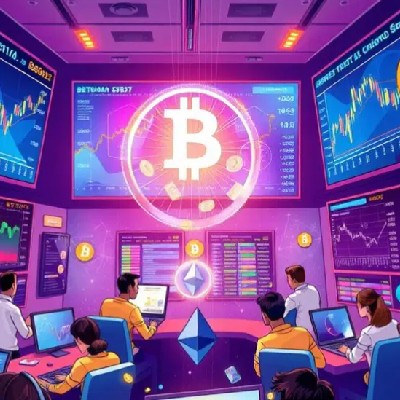Bitget:全球日交易量排名前 4!
BTC 市占率62.95%
Bitget 新幣上架 : Pi Network
BTC/USDT$85033.38 (+0.82%)恐懼與貪婪指數38(恐懼)
山寨季指數:0(比特幣季)
盤前交易幣種PAWS比特幣現貨 ETF 總淨流量:+$1.5M(1 天);-$771.3M(7 天)。Bitget 新用戶立享 6,200 USDT 歡迎禮包!立即領取
到 Bitget App 隨時隨地輕鬆交易!立即下載
Bitget:全球日交易量排名前 4!
BTC 市占率62.95%
Bitget 新幣上架 : Pi Network
BTC/USDT$85033.38 (+0.82%)恐懼與貪婪指數38(恐懼)
山寨季指數:0(比特幣季)
盤前交易幣種PAWS比特幣現貨 ETF 總淨流量:+$1.5M(1 天);-$771.3M(7 天)。Bitget 新用戶立享 6,200 USDT 歡迎禮包!立即領取
到 Bitget App 隨時隨地輕鬆交易!立即下載
Bitget:全球日交易量排名前 4!
BTC 市占率62.95%
Bitget 新幣上架 : Pi Network
BTC/USDT$85033.38 (+0.82%)恐懼與貪婪指數38(恐懼)
山寨季指數:0(比特幣季)
盤前交易幣種PAWS比特幣現貨 ETF 總淨流量:+$1.5M(1 天);-$771.3M(7 天)。Bitget 新用戶立享 6,200 USDT 歡迎禮包!立即領取
到 Bitget App 隨時隨地輕鬆交易!立即下載



Chat AI 價格AI
未上架
報價幣種:
TWD
數據來源於第三方提供商。本頁面和提供的資訊不為任何特定的加密貨幣提供背書。想要交易已上架幣種? 點擊此處
NT$0.003019+16.37%1D
價格
Chat AI 價格走勢圖(AI/TWD)
最近更新時間 2025-04-15 16:02:44(UTC+0)
市值:--
完全稀釋市值:--
24 小時交易額:--
24 小時交易額/市值:0.00%
24 小時最高價:NT$0.002961
24 小時最低價:NT$0.002535
歷史最高價:NT$26.79
歷史最低價:NT$0.{5}9119
流通量:-- AI
總發行量:
100,000,000AI
流通率:0.00%
最大發行量:
100,000,000AI
以 BTC 計價:0.{8}1096 BTC
以 ETH 計價:0.{7}5738 ETH
以 BTC 市值計價:
--
以 ETH 市值計價:
--
合約:
0xa89B...9AD7D80(BNB Smart Chain (BEP20))
更多
您今天對 Chat AI 感覺如何?
注意:此資訊僅供參考。
Chat AI (AI) 簡介
聊天 AI 代幣的獨特性和其對搜索引擎優化的價值
當我們提到區塊鏈和加密貨幣的時候,AI 人工智能和搜索引擎優化 (SEO) 可能不是我們首先想到的關鍵詞。然而,當這些技術與聊天 AI 代幣相結合時,創新的可能性無窮無盡。
聊天 AI 代幣概述
聊天 AI 代幣是一種基於區塊鏈的,專門用於 AI 聊天服務的數字貨幣。這種代幣不僅促進了服務的購買和交換,也為進行更高級的 AI 學習和開發活動提供了資源。
聊天 AI 代幣對 SEO 的價值
區塊鏈技術的去中心化性質為搜索引擎優化帶來了全新的視角。在傳統的搜索引擎優化中,網站的排名主要基於關鍵字使用、鏈接質量和內容質量等因素。然而,隨著聊天 AI 代幣的出現,我們有可能創建一種基於協議的排名系統,該系統能夠直接反應用戶的行為並獎勵創建高質量內容的網站。
總結
聊天 AI 代幣不僅可以為 AI 聊天服務提供一個長期可持續的盈利模式,更重要的是,通過區塊鏈技術的普遍應用,它具有重新塑造搜索引擎優化的潛力。鑑於這種可能性,當你下次研究新的 SEO 策略時,也許值得一試聊天 AI 代幣這種全新的方法。
現在,聊天 AI 代幣讓我們想象一下未來。人工智能正在深入滲透到我們生活的各個層面,而與此同時,區塊鏈技術正邁向成熟和擴大的道路。雖然兩者都是強大的科技趨勢,但現在看來,當它們結合起來時,將可能創造出全新的價值體系。聊天 AI 代幣給了我們一個初期的展示,可能是現實將如何適應這些變化的窗口。
Chat AI 的 AI 分析報告
今日加密市場熱點查看報告
今日 Chat AI 價格 TWD
今日 Chat AI 即時價格為 NT$0.003019 TWD,目前市值為 NT$0.00。過去 24 小時內,Chat AI 價格漲幅為 16.37%,24 小時交易量為 NT$0.00。AI/TWD(Chat AI 兌換 TWD)兌換率即時更新。
Chat AI 價格歷史(TWD)
過去一年,Chat AI 價格上漲了 -81.86%。在此期間, 兌 TWD 的最高價格為 NT$0.4126, 兌 TWD 的最低價格為 NT$0.{5}9119。
時間漲跌幅(%) 最低價
最低價 最高價
最高價 
 最低價
最低價 最高價
最高價 
24h+16.37%NT$0.002535NT$0.002961
7d+11.00%NT$0.002535NT$0.003465
30d+343.40%NT$0.0005799NT$0.02198
90d-63.16%NT$0.{5}9119NT$0.02198
1y-81.86%NT$0.{5}9119NT$0.4126
全部時間-98.14%NT$0.{5}9119(2025-02-17, 58 天前 )NT$26.79(2023-03-14, 2 年前 )
Chat AI 的最高價格是多少?
Chat AI 兌換 TWD 的歷史最高價(ATH)為 NT$26.79,發生於 2023-03-14。相較於 Chat AI 歷史最高價,目前 Chat AI 價格回撤了 99.99%。
Chat AI 的最低價格是多少?
Chat AI 兌換 TWD 的歷史最低價(ATL)為 NT$0.{5}9119,發生於 2025-02-17。相較於 Chat AI 歷史最低價,目前 Chat AI 價格上漲了 33002.96%。
Chat AI 價格預測
AI 在 2026 的價格是多少?
根據 AI 的歷史價格表現預測模型,預計 AI 的價格將在 2026 達到 NT$0.004156。
AI 在 2031 的價格是多少?
2031,AI 的價格預計將上漲 +21.00%。 到 2031 底,預計 AI 的價格將達到 NT$0.004767,累計投資報酬率為 +62.86%。
常見問題
Chat AI 的目前價格是多少?
Chat AI 的即時價格為 NT$0(AI/TWD),目前市值為 NT$0 TWD。由於加密貨幣市場全天候不間斷交易,Chat AI 的價格經常波動。您可以在 Bitget 上查看 Chat AI 的市場價格及其歷史數據。
Chat AI 的 24 小時交易量是多少?
在最近 24 小時內,Chat AI 的交易量為 NT$0.00。
Chat AI 的歷史最高價是多少?
Chat AI 的歷史最高價是 NT$26.79。這個歷史最高價是 Chat AI 自推出以來的最高價。
我可以在 Bitget 上購買 Chat AI 嗎?
可以,Chat AI 目前在 Bitget 的中心化交易平台上可用。如需更詳細的說明,請查看我們很有幫助的 如何購買 指南。
我可以透過投資 Chat AI 獲得穩定的收入嗎?
當然,Bitget 推出了一個 策略交易平台,其提供智能交易策略,可以自動執行您的交易,幫您賺取收益。
我在哪裡能以最低的費用購買 Chat AI?
Bitget提供行業領先的交易費用和市場深度,以確保交易者能够從投資中獲利。 您可通過 Bitget 交易所交易。
Chat AI 持幣分布集中度
巨鯨
投資者
散戶
Chat AI 地址持有時長分布
長期持幣者
游資
交易者
coinInfo.name(12)即時價格表

全球 Chat AI 價格
目前 Chat AI 用其他貨幣計價是多少?最近更新時間:2025-04-15 16:02:44(UTC+0)
AI 兌換 MXN
Mexican Peso
$0AI 兌換 GTQGuatemalan Quetzal
Q0AI 兌換 CLPChilean Peso
$0.09AI 兌換 UGXUgandan Shilling
Sh0.34AI 兌換 HNLHonduran Lempira
L0AI 兌換 ZARSouth African Rand
R0AI 兌換 TNDTunisian Dinar
د.ت0AI 兌換 IQDIraqi Dinar
ع.د0.12AI 兌換 TWDNew Taiwan Dollar
NT$0AI 兌換 RSDSerbian Dinar
дин.0.01AI 兌換 DOPDominican Peso
$0.01AI 兌換 MYRMalaysian Ringgit
RM0AI 兌換 GELGeorgian Lari
₾0AI 兌換 UYUUruguayan Peso
$0AI 兌換 MADMoroccan Dirham
د.م.0AI 兌換 OMROmani Rial
ر.ع.0AI 兌換 AZNAzerbaijani Manat
₼0AI 兌換 SEKSwedish Krona
kr0AI 兌換 KESKenyan Shilling
Sh0.01AI 兌換 UAHUkrainian Hryvnia
₴0- 1
- 2
- 3
- 4
- 5
購買其他幣種
在哪裡可以購買加密貨幣?
影片部分 - 快速認證、快速交易

如何在 Bitget 完成身分認證以防範詐騙
1. 登入您的 Bitget 帳戶。
2. 如果您是 Bitget 的新用戶,請觀看我們的教學,以了解如何建立帳戶。
3. 將滑鼠移到您的個人頭像上,點擊「未認證」,然後點擊「認證」。
4. 選擇您簽發的國家或地區和證件類型,然後根據指示進行操作。
5. 根據您的偏好,選擇「手機認證」或「電腦認證」。
6. 填寫您的詳細資訊,提交身分證影本,並拍攝一張自拍照。
7. 提交申請後,身分認證就完成了!
加密貨幣投資(包括透過 Bitget 線上購買 Chat AI)具有市場風險。Bitget 為您提供購買 Chat AI 的簡便方式,並且盡最大努力讓用戶充分了解我們在交易所提供的每種加密貨幣。但是,我們不對您購買 Chat AI 可能產生的結果負責。此頁面和其包含的任何資訊均不代表對任何特定加密貨幣的背書認可,任何價格數據均採集自公開互聯網,不被視為來自Bitget的買賣要約。
Chat AI 評級
社群的平均評分
4.6
此內容僅供參考。
Bitget 觀點

Crypto_Inside
2025/04/09 06:08
Crypto; what is liquidity. 🤔
In the context of cryptocurrency, liquidity refers to the ability to buy or sell a digital asset quickly and at a stable price.
What is Liquidity?
1. Market Depth: Liquidity is a measure of the market depth, which is the number of buyers and sellers in a market.
2. Trading Volume: Liquidity is also related to the trading volume, which is the amount of a digital asset being traded.
3. Price Stability: A liquid market is characterized by stable prices, with minimal price movements.
Importance of Liquidity
1. Easy Buying and Selling: Liquidity makes it easier to buy and sell digital assets.
2. Reduced Volatility: A liquid market tends to be less volatile, with smaller price swings.
3. Increased Investor Confidence: Liquidity can increase investor confidence, as it indicates a healthy and active market.
Factors Affecting Liquidity
1. Market Capitalization: The market capitalization of a digital asset can affect its liquidity.
2. Trading Volume: The trading volume of a digital asset can impact its liquidity.
3. Number of Exchanges: The number of exchanges listing a digital asset can also affect its liquidity.
Consequences of Low Liquidity
1. Price Volatility: Low liquidity can lead to significant price movements.
2. Difficulty Buying or Selling: Low liquidity can make it challenging to buy or sell digital assets.
3. Increased Risk: Low liquidity can increase the risk of market manipulation.
Improving Liquidity
1. Increasing Trading Volume: Increasing trading volume can improve liquidity.
2. Listing on More Exchanges: Listing a digital asset on more exchanges can increase its liquidity.
3. Market Making: Market making, where a third party provides liquidity to a market, can also improve liquidity.
@Crypto_inside
Thank you...🙂
$BTC $ETH $SOL $PI $AI $PUMP $PARTI $SOON $FARTCOIN $BROCCOLI $BUBB $TUT $BGSC $JELLYJELLY $TSTBSC $CEC $T2T2 $ZZZ $ASI $ARC
ASI+4.13%
BTC+0.46%

Crypto_Inside
2025/04/09 05:39
$ETH short term Technical Analysis :-
current price- $1,454.83
Support and Resistance Levels:
Support: Immediate support is observed around $1,410.
Resistance: Key resistance levels are identified at $1,520.
Market Sentiment:
The overall sentiment remains cautious, with ETH facing strong resistance and exhibiting bearish indicators.
$ETH follow for more updates...🙂
$BTC $ETH $SOL $PI $AI $PUMP $PARTI $SOON $FARTCOIN $BROCCOLI $BUBB $TUT $BGSC $JELLYJELLY $TSTBSC $CEC $T2T2 $ZZZ $ASI $MGT $PI
ASI+4.13%
BTC+0.46%

Crypto_Inside
2025/04/05 06:51
Crypto; what is Layer 2. 🤔
Layer 2 in crypto refers to a secondary framework or protocol built on top of a blockchain (Layer 1) to improve its scalability, efficiency, and usability.
Layer 2 Solutions:
1. State Channels: Enable multiple transactions to be processed off-chain, with only the final result being recorded on the blockchain.
2. Sidechains: Allow assets to be transferred between different blockchains, enabling interoperability.
3. Payment Channels: Enable fast and cheap transactions by creating a dedicated channel for payments.
4. Rollups: Bundle multiple transactions into a single transaction, reducing the load on the main blockchain.
Benefits of Layer 2:
1. Increased Scalability: Enables more transactions to be processed, improving the overall capacity of the blockchain.
2. Faster Transaction Times: Reduces the time it takes for transactions to be confirmed, making the blockchain more usable.
3. Lower Fees: Decreases the fees associated with transactions, making the blockchain more cost-effective.
Examples of Layer 2 Solutions:
1. Bitcoin's Lightning Network: A payment channel solution that enables fast and cheap transactions.
2. Ethereum's Optimism: A rollup solution that bundles multiple transactions into a single transaction.
3. Polygon's PoS Chain: A sidechain solution that enables interoperability between different blockchains.
How Layer 2 Works:
1. Transaction Processing: Transactions are processed off-chain or on a secondary chain.
2. Data Aggregation: Data is aggregated and compressed to reduce the load on the main blockchain.
3. Finality: The final result is recorded on the main blockchain, ensuring the security and decentralization of the network.
Layer 2 vs. Layer 1:
1. Layer 1: The underlying blockchain protocol (e.g., Bitcoin or Ethereum).
2. Layer 2: A secondary framework or protocol built on top of Layer 1 to improve scalability and efficiency.
Importance of Layer 2:
1. Scalability: Enables blockchains to handle increased traffic and usage.
2. Usability: Improves the overall user experience by reducing transaction times and fees.
3. Adoption: Encourages widespread adoption of blockchain technology by making it more scalable and efficient.
@Crypto_inside
Thank you...🙂
$BTC $ETH $SOL $PI $AI $SOON $FARTCOIN $BROCCOLI $BUBB $TUT $BGSC $JELLYJELLY $T2T2 $ZZZ $ASI $MGT $PI $ALCH $ARC $PARTI $PUMP
ASI+4.13%
BTC+0.46%

Crypto_Inside
2025/04/05 04:25
$ETH short term Technical Analysis :-
current price- $1,812.80
support levels around $1,775, with potential further support near $1,600.
resistance is observed near $1,840
Market sentiment is currently cautious, with external factors such as broader economic conditions influencing price movements.
$ETH follow for more updates...🙂
$BTC $ETH $SOL $PI $AI $SOON $FARTCOIN $BROCCOLI $BUBB $TUT $BGSC $JELLYJELLY $TSTBSC $CEC $ASI $MGT $PI $ALCH $ARC $PARTI $PUMP
ASI+4.13%
BTC+0.46%

Crypto_Inside
2025/04/05 04:19
$BTC short term Technical Analysis ;-
current price- $83,741
support between $79,159 and $80,967.
resistance is observed near $86,000
Market sentiment is currently influenced by external factors, including recent tariff announcements by President Donald Trump, which have introduced economic uncertainties.
In the short term, Bitcoin is exhibiting a downward trend, with technical indicators suggesting potential further declines.
$BTC follow for more updates...🙂
$BTC $ETH $SOL $PI $AI $SOON $FARTCOIN $BROCCOLI $BUBB $TUT $BGSC $JELLYJELLY $TSTBSC $CEC $T2T2 $ZZZ $ASI $MGT $PI $ALCH $ARC
ASI+4.13%
BTC+0.46%
相關資產
相近市值
在所有 Bitget 資產中,這8種資產的市值最接近 Chat AI。
關於 Chat AI 的更多資訊

































